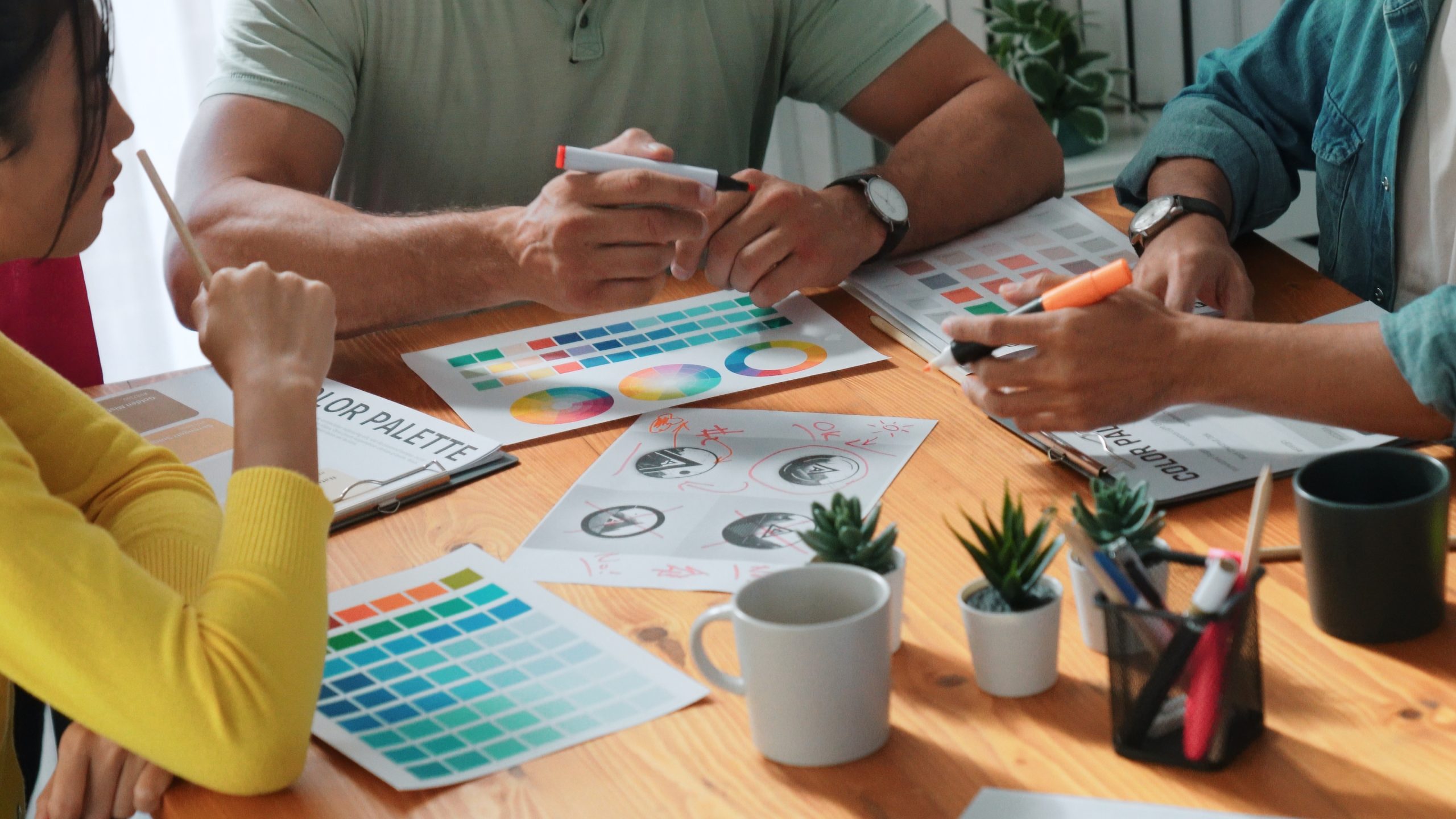Do you remember the last time you bought something because it looked appealing to you? It could be a sleek water bottle that came with minimalist packaging. Or a cozy coffee shop with a hand-drawn logo that made you feel right at home. Well, that is how a great branding design works. It speaks to you before even reading the label.
Branding design is more than a catchy color palette or a logo. We are talking about the visual language where people react to your product or services and make an effort to connect with your brand. Having a well-planned design can build trust, create recognition, and trigger emotion. Picture this: You are launching a new business or revamping an old one. As soon as you come up with a thoughtful branding design, notice how it can shape your customer’s feeling about the company.
Let’s look at the key factors that separate forgettable branding from the kind that leaves a lasting impression.

Branding Design: Is It Your Identity?
Branding design and identity are two ideas that go hand in hand. On one hand, a brand sums up how the target audience perceives a product or service. On the other hand, brand identity relates to how a business wants to be viewed.
Rather than calling it a day, successful brands go above and beyond to design a catchy identity. It is the one that blends a strong purpose with visual, intentional, and written elements.
However, these two ideas can sometimes be at odds depending on how successfully a company is able to develop and preserve its brand identity.
If we take a closer look, we can see that brand identity design encompasses everything from colors, packaging, and messaging to logos and typography. Creating an ecosystem of written and visual components that support and strengthen your brand’s “why” is the ultimate objective here. Once established, your brand identity can assist your existing consumers to feel at home and draw in new ones.
Your brand identity must, therefore, remain consistent. Your brand identity components must be distinct and consistent wherever they may be used since they embody and support the mission of your company.
The Building Blocks of a Great Branding Design
There are a few unique aspects of your brand, and those should be visible in your design. It can create a uniform and recognizable image. So, you may wonder how to get started with making a great design. Here are the crucial factors to consider when creating a branding design.
A Clear and Memorable Logo
The logo is often the first thing people notice and remember. Every time they come across your logo, they know it’s you. Having your logo designed by a professional branding agency ensures that it is simple, identifiable, and meaningful. Minimalism is an ongoing trend, and people are admiring it. A simple yet appealing logo becomes easy to recall. For instance, consider brands like Nike or Apple. Their brand logo is minimal but recognizable.
Colors, Shapes, and Fonts Matter
The colors, shapes, and fonts you choose convey meaning. Bold colors evoke confidence, while softer tones create a sense of calm. Serif fonts often feel classic and reliable, while sans-serif fonts give a clean, modern impression. Simplicity is essential. A logo with too many details might lose impact when scaled down, making versatility key for consistent branding across platforms.
Consistent Visual Identity
Branding goes beyond a single logo. It’s the full visual identity, including colors, fonts, and design elements. Consistency across platforms builds trust and recognition. A branding agency often creates style guides for professional logo design to ensure that your visuals look the same on your website, social media, and products. When everything aligns, it strengthens your brand’s presence.
Meaningful Color Palette
Colors trigger emotions and influence perception. Blue often represents trust and reliability, making it popular with banks and tech companies. Green conveys nature and health, while red sparks urgency and passion. Choosing colors that reflect your brand’s personality makes your branding feel intentional and authentic.
Typography That Reflects Personality
Fonts subtly shape your brand’s tone. Sleek, minimalist fonts feel modern, while hand-drawn or script fonts add a personal touch. A cohesive font pairing—bold for headlines and clean for body text—creates visual harmony and improves readability.
Authentic Brand Voice and Tone
Branding design isn’t just visual—it also includes your brand’s voice. Whether casual, formal, playful, or authoritative, the tone should feel authentic and consistent across all content. A luxury brand uses refined language, while a youthful brand might embrace a quirky, conversational tone.
Consistent Branding Across Platforms
Your website, social media, and marketing materials should share the same colors, fonts, and messaging. Inconsistent branding creates confusion, while consistency reinforces trust and recognition.
Timelessness Over Trends
Timeless branding choices remain relevant for years, while trendy designs quickly feel outdated. Brands like FedEx maintain consistency through simple, clever designs that stand the test of time.
Final Thoughts
Great branding design is clear, consistent, and emotionally resonant. It tells your brand’s story at a glance. From a memorable logo and cohesive color palette to the thoughtful use of space and typography, every element shapes how people perceive you.
When you invest in professional branding design, you create more than just a visual identity—you build recognition, trust, and loyalty. And that’s what turns casual viewers into lifelong customers.
Looking for a professional branding agency? Reach out to the expert team at Vowels for curating a great branding design.

I'm a business strategist and brand consultant who helps brand solve their business problems through developing competent experiences driven by insights from diagnosing leadership mindset. Need help with your brand? — Get in touch
Ready To Grow?
Reach Out To Us
-

-

- 310+
- Join more than 310 successful clients! 😮



